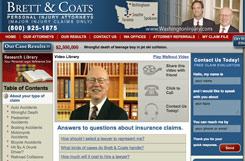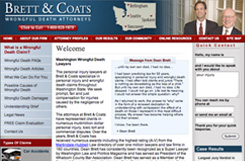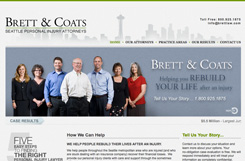Share Your Story
Click here to share your story about drunk driving.
On July 17th, 2003 at 1 a.m. while working a vehicle accident, I was struck by a drunk driver. I lost everything I had. My wife left, as 1 year of watching me have seizures and not get better was too much for her. More
Drunk Driving News
Drunk Driving Fatalities Drop to Lowest Rate since 1950
The U.S. Department of Transportation recently announced that U.S. fatalities due to drunk driving fell to a record low number in 2009, declining by 7.4% from 2008, with a 19% decrease since 2000. This represents the lowest number since 1950. More
Drug and Alcohol Courts: An Effective Alternative to Jail
Drug courts were developed in the 1980's in an effort to stop the abuse of alcohol and other drugs, and to reduce the criminal activity that typically accompanies these behaviors. More
Hold Drunk Drivers Responsible
Drunk Driving Statistics
Basic drunk driving statistics from NHTSA/FARS, 2009:
- In 2008, an estimated 11,773 people died in drunk driving crashes involving a DUI driver with an illegal BAC (Blood Alcohol Concentration of .08 or greater).
- These deaths constitute 31.6 % of the 37,261 total traffic fatalities in 2008.
- DUI drivers were involved in 72% of alcohol-impaired fatal accidents;
- 68% of alcohol-impaired driving fatalities involved drivers with a BAC level of .15 or higher.
- On average someone is killed by a drunk driver every 45 minutes in the U.S.
- About 3 in every 10 Americans will be involved in an alcohol-related crash at some time in their lives.
- The number of drunk driving fatality accidents has been reduced by 44%, from 21,113 in 1982 down to 11,773 in 2008 -- but clearly more needs to be done to reduce this number.
More than 1.46 million drivers were arrested in 2006 for driving under the influence (DUI) of alcohol or narcotics; this is an arrest rate of 1 for every 139 licensed drivers in the United States. A first-time drunk driving offender on average has driven drunk 87 times prior to being arrested. 50-75 % of drunk drivers whose licenses are suspended continue to drive.
Alcohol-related accidents in the U.S. cost the public an estimated $114.3 billion in 2000. People other than the drinking driver paid $71.6 billion of the alcohol-related crash bill, which is 63% of the total cost of these accidents.
To better understand the problem of drunk driving in the U.S., it is useful to see some of the latest statistics that help define the issue. The following information is taken from a report done for the National Highway and Traffic Safety Administration in 2007. To view the entire report, please go to Understanding At Risk Drivers.
The goal of the study was to better understand the thinking and behaviors of drivers most at risk to drink and drive. The conclusions drawn from the study are insightful.
Drivers Most At Risk: 18% of At-Risk Drivers do the bulk (82%) of serious driving under the influence (defined as driving within one hour of drinking three or more drinks). They are somewhat more likely than average to be male, 25-34, and single or never married. The vast majority of at-risk drivers are 21-34 years old (80%). Those who drink the heaviest are disproportionately younger (18-24), male, either single or “formerly married” (divorced, separated, or widowed), and either unemployed or students.
At-risk drivers drink frequently, at high volumes, and for long periods of time: 55% typically drink at least 4 drinks per occasion. Drivers most at risk have even higher consumption, self-reporting an average of 5.9 drinks per occasion. 44% typically drink at a faster rate than the body can metabolize alcohol (one drink per hour).
The top reasons at-risk drivers give for drinking and driving:
- 74% say they feel like they are OK to drive under the influence.
- 40% say they have driven in this condition before and were OK.
- 30% say they were expected to drive themselves home.
- 22% say no one suggested they should not drive.
Risk perception in at-risk drivers:
- Killing someone (45%) and hurting someone (14%) in an accident are the two most common primary concerns that at-risk drivers have about being caught drinking and driving.
- Drivers most at risk are less concerned about killing/injuring someone in an accident, and more concerned about consequences to themselves and their family, including going to jail (12%), losing their license (8%), getting fined (8%), the impact on their family (7%), and losing their job (7%).
- 79% of at-risk drivers believe they are at least somewhat likely to get stopped by their local police after having too much too drink.
For at-risk drivers, home is the most common place to drink, but almost all drink outside the home. The typical at-risk driver believes he/she can drink three drinks in two hours without becoming impaired, and are quite likely to believe that they are “OK to drive” after drinking.
About one of five at-risk drivers report having been stopped by law enforcement – 35% of them have been arrested.
The research and statistics demonstrate that while drunk-driving accidents and deaths are steadily decreasing, there is a large core segment of the population that continues to drink and drive. This population is responsible for a high percentage of accidents and deaths. They express attitudes and engage in risky behaviors that put us all in danger of becoming victims of drunk drivers, despite legislation and law-enforcement efforts designed to get these drivers off the roads.
Sources are National Highway and Traffic Safety Administration and Mothers Against Drunk Drivers.




